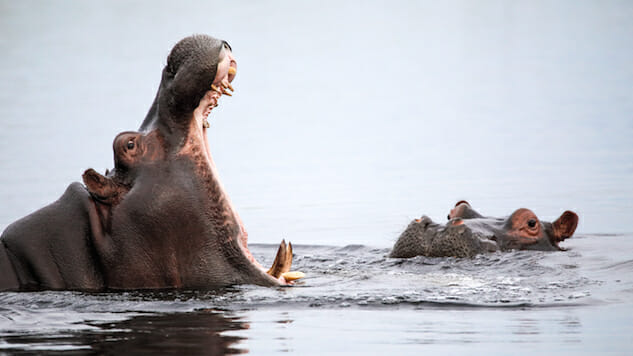National Geographic’s The Flood Is a Mind-Bending Tutorial on Ecological Connectedness
Photo: NHFU/William Steel TV Reviews The Flood
The treehuggers have always said it: Everything is connected. In the last hundred years, that sentiment has escaped the confines of Romantics and Transcendentalists and hippies to be embraced and vetted by physics: Everything is connected. Forms of connection once thought to be fanciful, or metaphorical, can now be duplicated, observed and vetted in labs. Eventually, and arguably “now” would be a really good interpretation of “eventually,” everyone needs to connect with the connection thing. Because once you really understand it, you cannot un-understand it, and it becomes clear that you actually do need to participate in things like not wasting resources and not putting food waste in landfills. If you want an absolutely mind-bending tutorial on connectedness, I highly recommend touching down in Botswana. And if that’s not an option, you might tune into National Geographic Channel for The Flood.
You can see the Okavango Delta from space. Both because it’s really big, and because it’s smack in the middle of the Kalahari Desert and a large network of waterways has a way of standing out against a vast backdrop of sand. It looks something like a hand, reaching into Botswana from Angola, fingers pointing southeastward. It’s a unique and intense landscape and possibly one of the world’s most unspoiled examples of How the World Works.
You could say it begins with water, though you could also say it begins with fire. Or termites. Or leopards. The point is, a circle doesn’t have a beginning point.
Narrated by the amazing Angela Bassett, and helmed by Brad Bestelink, who grew up in this Edenic landscape, The Flood is a two-hour journey through the life cycle of one of the planet’s last real wildernesses. It’s divided into two episodes, which roughly encompass a “waxing” and “waning” look at the flood plain, respectively.
There’s one key problem with this documentary, which is that the brilliant, brilliant photography deserved a better scriptwriter. Bassett does a very fine job with what she’s given, but what she’s given is not half as intelligent as the ecosystem it’s trying to describe. That is a significant flaw, but the sensitive, saturated, deep-diving visuals deserve your attention regardless, so don’t give up on it just because the voiceover could be clearer, deeper and at once more poetic and more direct. This film crew has poetry to spare.
There are some staggering action shots (leopard flying out of a tree and landing with military precision on an impala, Nile crocodile tangling with lion) and time-lapse shots of shifting landscapes. The panoramic shots of clouds and lakes and huge flocks of birds are stunning. Even more stunning are the dazzling close-ups of everything from a water droplet or grain of sand to a mating swarm of dragonflies to a hippopotamus to the tear-streak markings on the face of a cheetah. So you want to forgive the script for its distraction. (E.g., we’re set up to expect a treatise on leopards and timing and immediately defect to the bloom cycle of a kigelia tree and its symbiotic relationship with vervet mokeys. I mean, it circles back to the leopard, but there are tons of these moments and they feel… well, disconnected, ironically enough.)
Rain from unseen highlands to the northwest turns a piece of the Kalahari from a barren stretch of sand to one of the most rich and diverse ecosystems in the world. Every single thing in that system works for the system. Everything has a function. Nothing is extraneous. Put your feet on the ground in the dry season and you can see it: sand. It’s baffling that it could produce enough vegetation to support dense concentrations of grazers and everything that grazes on them. Merely adding water wouldn’t do that. How do you get organic matter into the ground? Hyenas supply calcium by digesting bones. Wildfires sparked by lightning release copious nutrients from burning trees. Seeds sprout in animal dung. Termites compost dead trees (probably culled by elephants), and the high-fertility mounds they engineer become desirable origin points for new trees. Everything is managed: Hippos sculpt and maintain waterways, elephants handle landscape architecture, birds control bugs; every population is managed by every other.
Maybe the lesson here is that the “circle of life” isn’t a circle at all. It’s something much more multivalent. The Okavango Delta is not quite like anywhere else on Earth, but it’s also exactly like everywhere else on earth: fragile yet resilient, orderly yet chaotic, brutal yet nurturing, intelligent and profoundly interconnected. And The Flood is a stunning, lovingly photographed visual safari.
The Flood premieres Sunday, Nov. 25 at 8 p.m. on National Geographic Channel.
Amy Glynn is a poet, essayist and fiction writer who really likes that you can multi-task by reviewing television and glasses of Cabernet simultaneously. She lives in the San Francisco Bay Area.